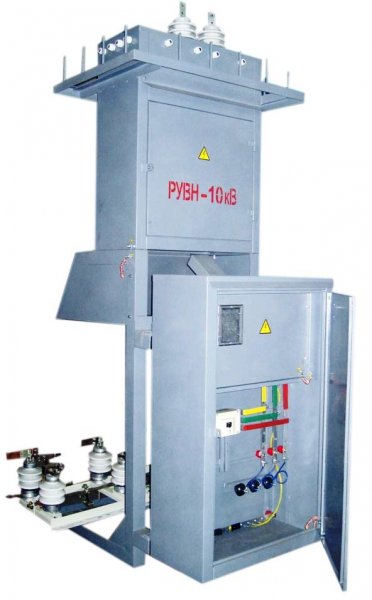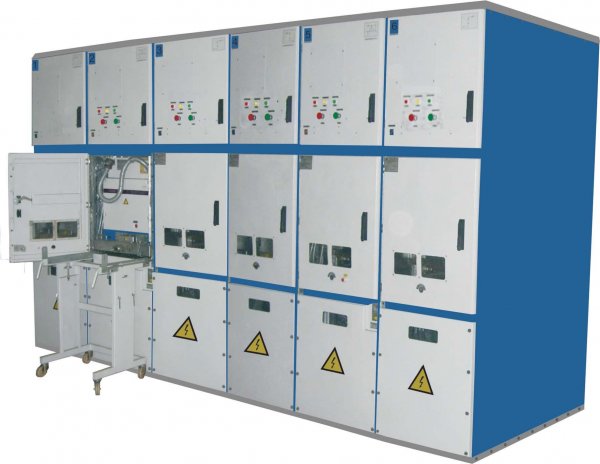What is a complete device, nku, principle of operation, advantages, examples
The complete device is understood as part of an electrical installation consisting of metal structures with installed and connected devices according to a certain scheme, devices for protection, control and measurement. Complete units are delivered to the installation site in an assembled state.
Currently, the technique is characterized by the wide use of lifting and transport vehicles. So, in modern methods of construction, a clear direction is observed: replacement of construction and assembly work carried out in the workshop with the production and assembly of large ready-made units in the factory with their subsequent delivery to the installation site and a minimum of assembly work at the installation site.
Manufacturing and assembly in a factory environment for mass production is always cheaper and provides a higher quality product than shipping and assembly on site.
When applying complete devices for electrical installations installation is reduced to the installation of ready-made blocks and the execution of external connections between these blocks. The limits of expansion of all equipment during installation work are determined only by the conditions of transportation.
The principle of complete electrical equipment gave positive results in operation as well. In addition to high reliability, due to the implementation of closed devices with small dimensions, repair work and equipment maintenance were significantly simplified and reduced in cost.
Instead of inspecting and repairing equipment at the installation site in cramped and uncomfortable conditions, it became possible to disconnect the entire device from the circuit, transfer it to a workshop or laboratory and repair or check in comfortable stationary conditions.

For cases where disconnection and transfer of an entire electrical installation block is impractical, part of the electrical installation block is made in the form of a retractable block, on which the main switching and operating equipment that requires the most frequent maintenance is concentrated.
The question of disconnecting devices from the installation is solved by using special detachable contacts and rows of terminals. The latter are mainly used in control, signaling and protection circuits.
The creation of retractable units fundamentally affected the system of operation and reliability of electrical installations: thanks to the replacement of the repaired unit with a spare one, it became possible to work during the repair or inspection of the device at this connection.
In the presence of plug connectors, such a replacement is carried out within a short time without removing the voltage from this device with the complete safety of the service personnel during this operation.
However, the use of plug-in sockets also has negative aspects: they increase costs and complicate the installation, require high manufacturing accuracy and, with poor manufacturing and assembly quality, can even significantly reduce the reliability of the installation.
As a result, along with the use of blocks with detachable contacts in complete devices, the installation of equipment with conventional bolted or even welded joints is also widely used. Such connections are widely used in complete devices with simple circuits and small dimensions. The criterion for the feasibility of implementing the device in one form or another is the minimum estimated costs.
Complete devices are the basis of the industrialization of electrical installation work, high culture of electrical installation work and ensure reliable operation.
Low voltage sets (LVCD)
Full shields, points and boxes are used to distribute electricity to individual consumers or groups of consumers on main lines. They are equipped with switching and protective devices: circuit breakers, fuses, circuit breakers.
Electrical panels are completed by several panels, which in turn constitute a complete structure. Shields are made for one-way or two-way service.
Double-sided service boards are more convenient to work with, but require more space than single-sided service boards.For this reason, installing them directly in production rooms is of little use, and they are installed in special electrical rooms.
The distance from the boards to the walls of the building, equipment and adjacent electrical structures is determined PUE.
Control station boards are complete products with large blocks. Controls and automation equipment are installed in the panels of the control stations, with the help of which this group of mechanisms is controlled. Shields can be opened and closed.
The former are intended for installation in special electrical rooms, the latter are for installation in production workshops and have rubber or other seals to protect against dust.
Control station — this is a complete device for starting, protecting and controlling an electrical receiver. The control station can consist of several blocks or control panels.
Control panels They are either a vertical frame with insulating plates on which the equipment is fixed, or a structure with perforated rails for installing the equipment.
Installation on insulating rails is now widespread. Open panels are produced in various designs, taking into account the set of equipment and the conditions of installation of the panel: dimensions, configuration and height of the room.
Complete control stations for industrial use
Examples of other complete devices:
Complete switchgear and transformer substations in urban power transmission networks
Prefab cameras of one-way service KSO
Complete Distribution Units (KRU)
Schemes of whole transformer substations (KTP)

